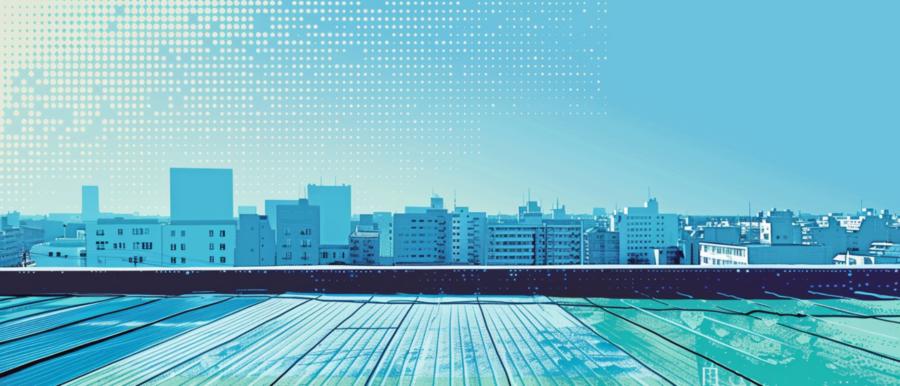Chilling Out on Top
Imagine turning your roof into a giant reflector. Instead of absorbing sunlight, it bounces it back into the atmosphere. That’s the basic premise behind cool roofs. These roofs are designed with materials that reflect more sunlight and absorb less heat compared to standard roofs. They come in shades that would make a polar bear smile, mostly bright whites or lighter hues, although innovative new materials can make even darker colors ‘cool.’Installing a cool roof is like choosing a light-colored car over a dark one on a hot day. You wouldn’t park your black sedan in the sun unless you were trying to bake cookies on the dashboard. Similarly, converting traditional dark roofs to cooler versions can reduce indoor temperatures by several degrees, leading to less reliance on air conditioning and more ice cream staying solid in the freezer.
The Cool Roof Revolution
Urban planners and environmentally conscious architects are already turning up the thermostat on the cool roof movement. Cities like Los Angeles have started requiring new buildings to have reflective roofs or green roofs—those covered with vegetation. Such policies not only aim to improve comfort but also to slash energy consumption and combat climate change.In residential areas, cool roofs can reduce air conditioning needs by 10-30%, which is like giving your wallet a nice cold drink on a sweltering day. This reduction in energy use also translates to fewer greenhouse gas emissions, making cool roofs a double scoop of environmental and economic benefits.
More Than Just a Cool Idea
The impact of cool roofs extends beyond the immediate environment of the buildings they cover. By decreasing the need for air conditioning, they help reduce the urban heat island effect across entire neighborhoods. It’s a collective sigh of relief as the local temperature dips, making summer in the city a bit more bearable for everyone.Moreover, cool roofs contribute to stormwater management. Unlike traditional roofs, which efficiently funnel rainwater to the streets (and often overwhelming drainage systems), cool roofs can be designed to retain water for gradual release or absorption. This feature is particularly beneficial in areas susceptible to flash floods or where water resources are scarce.
Let’s not forget the social ripple effects. Cooler cities mean healthier residents. Lower temperatures reduce heat-related illnesses, which are a significant concern during heat waves, particularly for vulnerable populations like the elderly. By keeping cities cooler, we’re not just improving comfort; we’re saving lives.
Overcoming Obstacles
Despite the benefits, the adoption of cool roofs is not without its challenges. Initial costs can be higher than traditional roofing materials, though the long-term energy savings often offset these. Additionally, in colder climates, there’s a concern that cool roofs could increase heating costs during winter. However, with proper design and material selection, these impacts can be minimized.Moreover, not all buildings are suitable for a simple roof makeover. Structural limitations, aesthetics, and historical preservation concerns can all play a role in determining whether a cool roof is feasible. For these situations, alternative solutions like green roofs or improved insulation might be the way to go.
A Broader Perspective on Cool
The effectiveness of cool roofs goes beyond the buildings they cover. These innovative coverings are part of a larger strategy to make urban environments more sustainable and livable. As city populations continue to grow, the integration of such technologies becomes increasingly essential to manage not only heat but also air quality and energy use.One interesting angle is how cool roofs can complement other sustainable urban planning efforts, such as increased green spaces and enhanced public transportation networks. By reducing heat absorption at the source, cool roofs decrease the overall energy demand within urban infrastructures, allowing cities to allocate resources more effectively elsewhere.
A Case Study in Cool
Take, for example, the city of Phoenix, Arizona, known for its blistering summer temperatures. In recent years, Phoenix has implemented cool roofs across numerous public buildings, resulting in measurable decreases in indoor temperatures and significant savings on energy bills. The city’s efforts provide a blueprint for other hot cities worldwide, proving that cool roofs are not just a quick fix but a part of the long-term climate resilience strategy.The Future is Cool
Looking forward, the potential innovations in cool roofing materials are exciting. Scientists are developing ultra-reflective paints and materials that could push the boundaries of how cool roofs can be. These advancements promise even greater reductions in heat absorption, possibly revolutionizing how we think about urban design and its role in climate adaptation.Getting Involved
For those interested in joining the cool roof revolution, there are several ways to get involved. Homeowners can consider installing cool roofs during renovations or new constructions. Community leaders and local governments can advocate for regulations and incentives that promote cool roofs. Even spreading the word about the benefits of cool roofs contributes to a broader understanding and adoption of this technology.Education is crucial, as the more people understand the benefits and potential of cool roofs, the more likely they are to support such initiatives. Workshops, webinars, and community meetings can play a vital role in educating the public about the advantages of cool roofing solutions.
Wrapping It Up
In conclusion, cool roofs offer a promising solution to the urban heat island effect—a problem that will only grow as cities expand and temperatures rise. By reflecting sunlight and reducing heat absorption, cool roofs not only make individual buildings more comfortable and energy-efficient but also contribute to the overall cooling of urban environments. This makes cities more sustainable, livable, and prepared for the challenges of climate change. As we continue to innovate and improve the technologies behind cool roofs, their role in urban planning will undoubtedly expand, leading to cooler, more resilient cities around the globe.Article kindly provided by futuraroof.com


